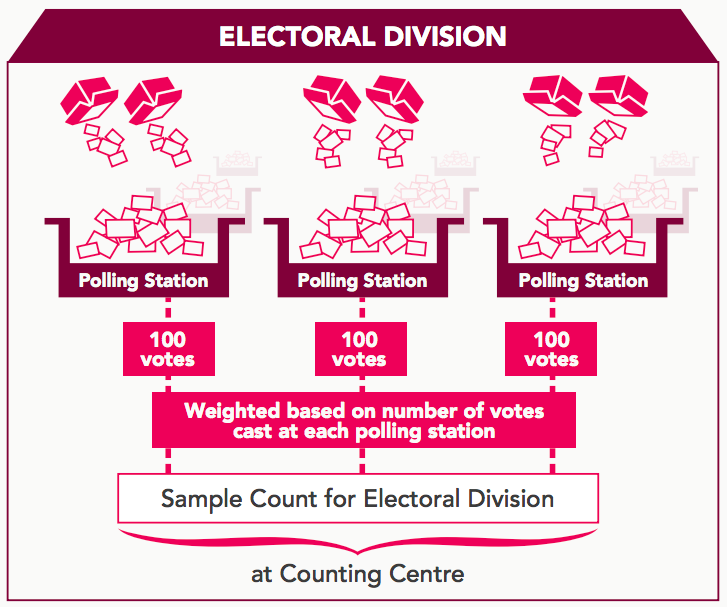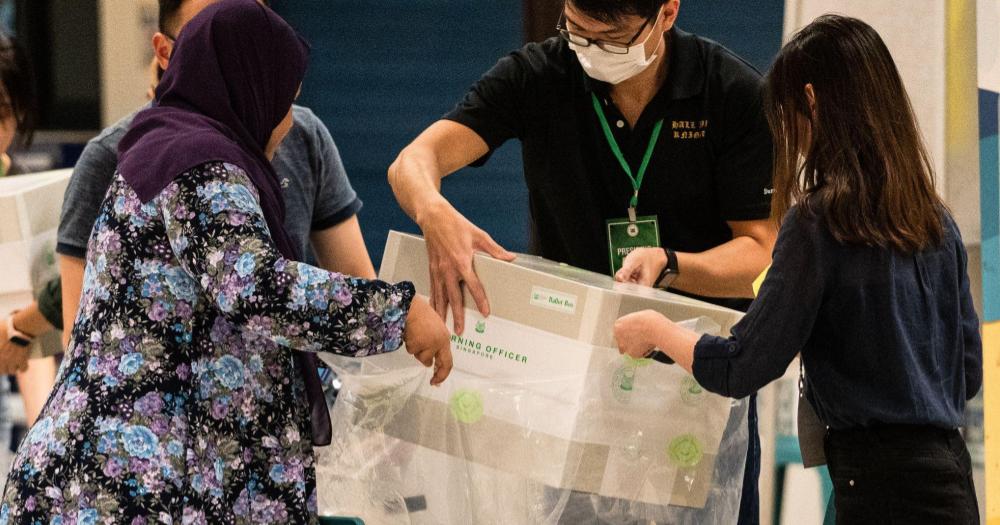
 On Sep 1, Singapore went to the polls to elect a president for the first time since 2011.
On Sep 1, Singapore went to the polls to elect a president for the first time since 2011.
The full results of the election are expected to be available around midnight.
But the Elections Department is expected to release a sample count between 10 and 11pm, two or three hours after polls closed at 8pm.
Sample counts have been released to the public since the 2015 general election, but have been provided to candidates and their counting agents since 2011.
So how does the sample count work?
For PE2023, there are 1,264 polling stations.
 Sample count infographic from ELD.
Sample count infographic from ELD.
According to the Elections Department, from each of these polling stations, a counting assistant will pick up a random bundle of 100 ballot papers in front of the candidates and counting agents present.
The 100 votes will be counted, also in the presence of candidates and counting agents.
The votes will then be added up, and weightage will be assigned to account for the difference in the number of votes cast at each polling station.
The previous two occasions where sample counts were used were both General Elections in 2015 and 2020, and sample counts were released for every single GRC and SMC.
How accurate is the sample count?
The sample count is expected to have a small margin of error.
During GE 2015 ,the results of the sample count came within 2 per cent of the official results, in all constituencies except MacPherson.
In MacPherson SMC, the sample count indicated a 63 per cent victory for Tin Pei Ling, but the actual result was 65.58 per cent.
GE 2020 saw similar small margins, with the seven SMCs recording differences of between 2 and 5 per cent, such as Kebun Bahru SMC, where the sample count was out by about 5.1 per cent.
To sum up, the actual election result is likely to be different from the sample count, but not by a big margin.
Why have a sample count?
According to the ELD, the sample count is performed to get an early indication of the possible electoral outcome, for that electoral division.
It helps to reduce speculation and misinformation from unofficial sources before the release of official results.
The sample count also helps election officials check against the election result for that electoral division.
According to the Institute of Policy Studies' Gillian Koh, writing in 2015, a sample count might be considered as a pre-emptive move to head off public order incidents that "could erupt in such high-octane situations of uncertainty in hotly-contested seats".
The sample counts, a statistically proven process, would give the public a measure from which they could measure the veracity of any result-related rumours they may have heard.
But no matter how accurate the sample count may be, it is unlikely that it will dissuade election watchers from staying up for results.
Related story
Top image by Alvin Philemon
If you like what you read, follow us on Facebook, Instagram, Twitter and Telegram to get the latest updates.

